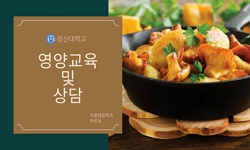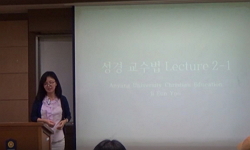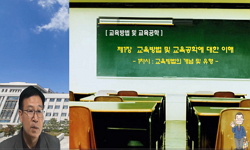This study surveyed on the nutrition education at elementary schools. A total of 155 elementary schools operating school lunch program in Seoul area were surveyed for this study. The survey was conducted for 4 months from Sept. 1 to Dec. 21 by prepare...
http://chineseinput.net/에서 pinyin(병음)방식으로 중국어를 변환할 수 있습니다.
변환된 중국어를 복사하여 사용하시면 됩니다.
- 中文 을 입력하시려면 zhongwen을 입력하시고 space를누르시면됩니다.
- 北京 을 입력하시려면 beijing을 입력하시고 space를 누르시면 됩니다.
서울지역 초등학교의 영양교육 실시에 관한 조사연구 = A Study on the Nutrition Education of Elementary Schools Providing Food Service in Seoul Area
한글로보기부가정보
다국어 초록 (Multilingual Abstract)
This study surveyed on the nutrition education at elementary schools. A total of 155 elementary schools operating school lunch program in Seoul area were surveyed for this study. The survey was conducted for 4 months from Sept. 1 to Dec. 21 by prepared questionaire. The results of this study were as follows :
1) The schools conducting nutrition education were 91.0%. The frequency of nutrition eudcation was 1 or 2 times per a year in 13.2% of the schools, 1 or 2 times per a month in 74.3%, 1 or 2 times per a week in 9.6%, and every day education in only 2.9%. The nutrition education provided for parents, cooks, and teachers was 39.6%, 54.4%, and 20.1% respectively.
2) As to the teaching methods : direct education was 13.6%, indirect education was 29.7%. education through broadcasting was 13.6%, education by correspondence was 89%, field education was 49%, education through VTR was 23.3%. 84.6% of dietitians think that direct education is the most effective. 10.7% of dietitians think that field education is the most effective and only 2% of the dietitians think that education by correspondence is the most effective.
3) As to the contents of education: the education for balanced food habits was 80.7%, the education for the necessity of school lunch program was 75.7%, the education for nutrition knowledge was 75%, the education for sanitation was 72.1%, the education for the criteria and constitution of food for good health was 66.4%, the education for diet theraphy was 39.3% and the education for menu planning was 21.4%.
4) The answers for the question asking what were the teaching media most used were VTR (26.3%), poster(23.0%), pamplet(23%), chart(21.1%), pictures(16.4%), food model(I1.8%), leaflet(S.6%), flannel graph(5.9%), newspaper(5.9%), slide(2.0%), puppet play(1.3%). They answered about the maker of the media that The Korean Dietetic Association was 53.8%. their own made media was 22.1%. The City Education Hall was 11.5%, the Rural Development Administration was 6.7%, the Ministry of Education was 5.8%.
5) The schools which have educational objects for nutrition education were 21.8%, the schools which have curriculums for nutrition education were 22.5%, the schools which plan annual education programs were 42.7%, the schools which evaluate the effectiveness of education were only 3.6%. As to the satisfaction on the nutrition education of themselves: more than half of them(56.3%) were not satisfied with the nutrition education. The main reasons for dissatisfaction were a lack of systematic education system(33.6%), a lack of textbooks or teaching media(24.3%), and a lack of teaching time(24.3%).
목차 (Table of Contents)
- ABSTRACT = 21
- Ⅰ. 서론 = 22
- Ⅱ. 연구방법 및 내용 = 23
- 1. 조사대상 및 기간 = 23
- 2. 조사내용 및 방법 = 23
- ABSTRACT = 21
- Ⅰ. 서론 = 22
- Ⅱ. 연구방법 및 내용 = 23
- 1. 조사대상 및 기간 = 23
- 2. 조사내용 및 방법 = 23
- Ⅲ. 결과 및 고찰 = 23
- 1. 조사대상 초등학교의 급식현황 = 23
- 2. 영양사의 일반적인 특성 = 24
- 3. 영양교육의 실시현황 = 25
- 4. 영양교육의 실시방법 = 27
- 5. 영양교육의 실시내용 = 28
- 6. 영양교육 매체의 활용경향 = 29
- 7. 영양교육 관련업무 = 31
- 8. 영양교육의 중요성 인지도 = 33
- Ⅳ. 요약 및 결론 = 34
- 참고문헌 = 35
동일학술지(권/호) 다른 논문
-
- 서울保健大學
- 권영만
- 1996
-
저가의 랜(LAN)과 PC환경을 이용한 의료화상 검색시스템에 관한연구
- 서울保健大學
- 김명관
- 1996
-
- 서울保健大學
- 김규동
- 1996
-
- 서울保健大學
- 김현철
- 1996




 RISS
RISS






